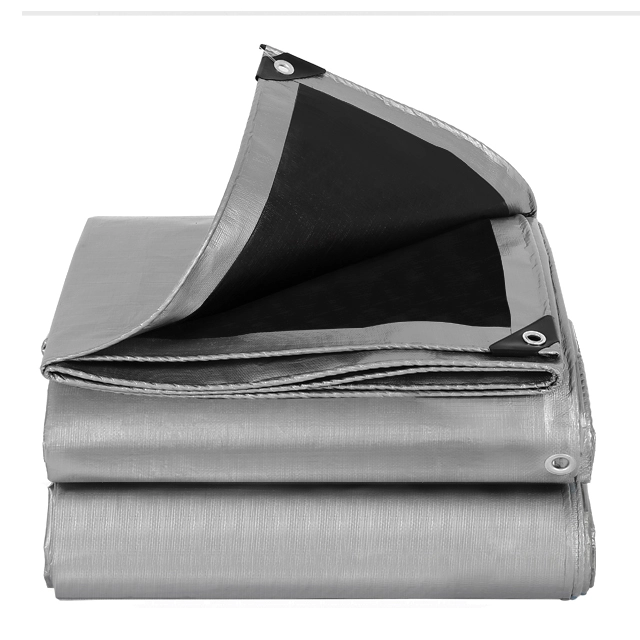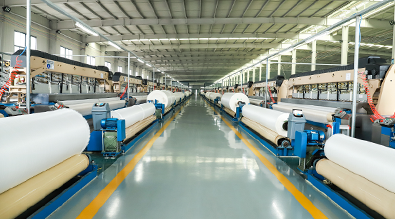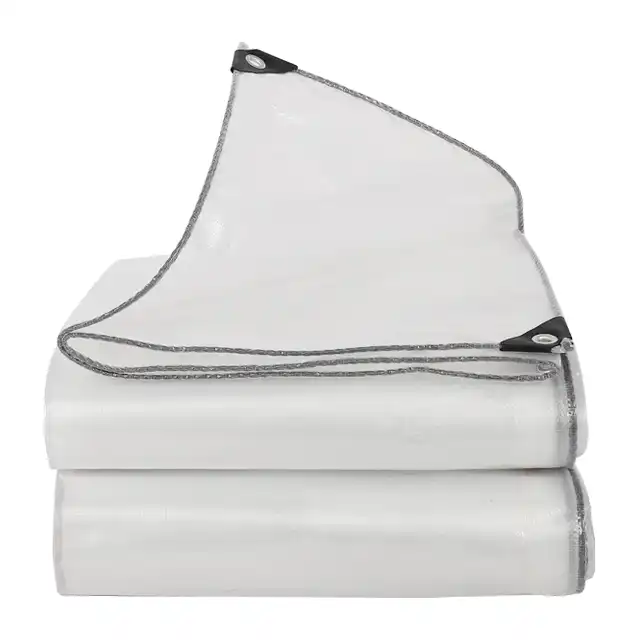How to Select the Best Awning Tarpaulin for Your Home?
Imagine stepping onto your patio on a scorching summer day, only to be met with unbearable heat that makes outdoor living impossible. Or picture your outdoor furniture fading and deteriorating under relentless UV rays, costing you hundreds in replacement costs. These common homeowner frustrations can be solved with the right awning tarpaulin. Selecting the best awning tarpaulin for your home involves understanding material durability, UV protection capabilities, waterproof performance, and proper sizing to ensure long-lasting outdoor protection. This comprehensive guide will walk you through every critical factor, from material composition to installation requirements, empowering you to make an informed decision that protects your investment and enhances your outdoor living space for years to come.
Understanding Awning Tarpaulin Materials and Their Impact on Performance

The foundation of any quality awning tarpaulin lies in its material composition, which directly determines its durability, weather resistance, and longevity. Modern awning tarpaulin products are predominantly manufactured from high-density polyethylene (HDPE) woven fabric combined with low-density polyethylene (LDPE) coating, creating a robust barrier against environmental elements. This dual-layer construction provides exceptional strength while maintaining flexibility, making it ideal for residential applications where both performance and aesthetics matter. When evaluating material quality, consider the fabric's mesh count and thickness. Professional-grade awning tarpaulin typically features mesh counts ranging from 10x10 to 14x14, with thickness measurements between 7 to 12 mil. Higher mesh counts indicate tighter weaving, which translates to superior tear resistance and enhanced waterproofing capabilities. The HDPE woven fabric serves as the structural backbone, providing tensile strength that prevents sagging and tearing even under challenging weather conditions, while the LDPE coating creates an impermeable barrier that repels water and resists UV degradation.
-
The Role of UV Treatment in Extending Lifespan
UV treatment represents one of the most critical features in quality awning tarpaulin construction. Exposure to harmful ultraviolet rays causes material degradation, color fading, and structural weakening over time. Premium awning tarpaulin products incorporate UV stabilizers ranging from 1% to 7% during the manufacturing process, significantly extending the product's functional lifespan. These UV inhibitors work by absorbing and dissipating ultraviolet energy before it can break down the polyethylene molecular structure, ensuring your awning maintains its integrity and appearance for years rather than months. The importance of UV protection cannot be overstated, particularly for homeowners in regions with intense sun exposure. Without adequate UV treatment, even high-quality materials can begin showing signs of deterioration within a single season, manifesting as brittleness, discoloration, and reduced waterproofing effectiveness. When selecting your awning tarpaulin, verify that the product specifications explicitly mention UV treatment percentages, and prioritize options offering at least 3% UV stabilization for optimal long-term performance in residential applications.
Evaluating Weight and Durability Specifications for Home Awning Applications
The weight specification of awning tarpaulin, measured in grams per square meter (gsm), serves as a reliable indicator of its overall durability and suitability for different applications. For residential home awnings, middle-duty options weighing between 100gsm to 180gsm provide an excellent balance of durability, manageability, and cost-effectiveness. These specifications ensure the awning tarpaulin is substantial enough to withstand typical weather conditions while remaining light enough for straightforward installation and maintenance procedures. Understanding the relationship between weight and application helps homeowners make appropriate selections. Lighter awning tarpaulin options (65gsm to 99gsm) may suffice for temporary shade solutions or seasonal applications, but they lack the structural integrity required for permanent installations exposed to wind, rain, and temperature fluctuations. Conversely, heavy-duty specifications exceeding 200gsm, while offering maximum durability, may be unnecessarily robust for standard residential applications, adding unnecessary cost and installation complexity without proportional benefits for typical homeowner needs.
-
Assessing Tear Resistance and Waterproof Performance
Tear resistance stands as a fundamental performance characteristic that separates quality awning tarpaulin from inferior alternatives. This property depends on both the base fabric construction and the coating application process. High-quality awning tarpaulin utilizes tightly woven polyethylene fibers that distribute stress across the material surface, preventing small tears from propagating into larger failures. When combined with proper reinforcement at stress points such as grommets and seams, tear-resistant awning tarpaulin can withstand considerable mechanical stress without compromising structural integrity. Waterproof performance goes beyond simply repelling water droplets; it requires maintaining impermeability under pressure and over extended periods. Professional-grade awning tarpaulin achieves 100% waterproof performance through the lamination process where LDPE coating is heat-bonded to both sides of the woven fabric. This creates a seamless barrier that prevents water penetration while allowing the material to remain flexible and conformable to awning frames. Additionally, quality waterproof awning tarpaulin resists mildew and fungal growth, preventing the deterioration that commonly affects inadequately sealed materials in humid environments.
Sizing Considerations and Custom Awning Tarpaulin Solutions
Accurate sizing represents a critical factor in awning tarpaulin selection, as improper dimensions can compromise both functionality and aesthetics. Before purchasing, homeowners should carefully measure the area requiring coverage, accounting for desired overhang, attachment points, and potential water runoff considerations. Modern manufacturing capabilities allow for awning tarpaulin production in widths up to 5.1 meters without seams, providing seamless coverage for most residential applications and eliminating potential weak points where water intrusion might occur. Custom awning tarpaulin solutions offer significant advantages for homeowners with unique architectural features or specific coverage requirements. Rather than attempting to adapt standard sizes to irregular spaces, custom fabrication ensures precise fit, optimal water drainage angles, and professional appearance. When specifying custom dimensions, consider seasonal variations in sun angle, prevailing wind directions, and the relationship between covered and uncovered areas to maximize the awning's functional benefits throughout the year. Professional manufacturers can accommodate virtually any dimensional requirement, producing awning tarpaulin that integrates seamlessly with existing home architecture.
-
Color Selection and Its Practical Implications
Color selection for awning tarpaulin extends beyond aesthetic preferences to encompass practical performance considerations. Darker colors naturally absorb more solar radiation, providing enhanced shade and cooling benefits but potentially shortening material lifespan due to increased thermal stress. Lighter colors reflect more sunlight, reducing heat absorption and extending material durability, though they may show dirt and staining more readily. The availability of awning tarpaulin in multiple color options allows homeowners to balance aesthetic preferences with performance requirements specific to their regional climate and maintenance preferences. Consider how your chosen awning tarpaulin color integrates with existing home exteriors, complementing architectural features rather than creating visual discord. Popular color choices include traditional options like blue, green, and white, along with contemporary alternatives such as gray, brown, and custom hues. Beyond visual appeal, remember that color stability depends heavily on UV treatment quality; even vibrant colors can maintain their appearance for years when manufactured with appropriate UV stabilizers, while inadequately protected materials fade quickly regardless of initial color selection.
Installation Requirements and Structural Support Considerations
Proper installation fundamentally determines awning tarpaulin performance and longevity. Before installation, assess the structural capacity of mounting surfaces to ensure they can support both the awning's weight and anticipated wind loads. Residential applications typically require secure attachment to wall studs or structural beams rather than surface-mounted fasteners that may fail under stress. The awning tarpaulin itself should feature reinforced edges with grommets spaced approximately every 18 inches, providing multiple secure attachment points that distribute tension evenly across the material surface. Frame selection or construction represents another critical installation consideration. Whether utilizing commercial awning frames or constructing custom support structures, ensure adequate strength to prevent sagging, which compromises water drainage and creates stress points in the awning tarpaulin material. Adjustable tensioning mechanisms allow for seasonal adjustments as materials expand and contract with temperature variations. For homeowners lacking installation experience, consulting with professional installers ensures proper mounting angles for optimal water runoff, appropriate tensioning to prevent flapping in wind, and secure fastening that protects both the awning tarpaulin and the underlying structure.
-
Maintenance Practices That Extend Awning Tarpaulin Lifespan
Regular maintenance significantly extends awning tarpaulin functional lifespan while preserving appearance and performance. Simple cleaning procedures using mild soap solutions and soft brushes remove accumulated dirt, pollen, and organic debris that can promote mildew growth and material degradation. Avoid harsh chemical cleaners or abrasive tools that might compromise the protective coating or create micro-tears in the fabric structure. For optimal results, schedule cleaning activities during mild weather conditions when the awning tarpaulin can be thoroughly rinsed and allowed to dry completely before retraction or storage. Periodic inspections identify potential issues before they escalate into costly failures. Examine grommets for secure attachment and signs of tearing, check seams for separation or water infiltration, and assess overall material condition for UV damage indicators such as brittleness or discoloration. Address minor issues promptly through patching or reinforcement procedures, preventing small problems from compromising the entire awning tarpaulin. During extreme weather events, consider temporarily removing or securing the awning to prevent damage from high winds or heavy snow accumulation, particularly if your awning tarpaulin wasn't specifically rated for such conditions.
Conclusion
Selecting the best awning tarpaulin for your home requires careful evaluation of material composition, weight specifications, UV protection, sizing accuracy, and installation requirements. By prioritizing quality polyethylene construction with adequate UV treatment, choosing appropriate weight classifications for your application, and ensuring proper installation with regular maintenance, homeowners can enjoy years of reliable outdoor protection and enhanced living space functionality.
Cooperate with Linyi Shengde Plastic Co., Ltd.
For over two decades, Linyi Shengde Plastic Co., Ltd. has established itself as a leading China awning tarpaulin manufacturer, delivering premium PE tarpaulin solutions to customers worldwide. As a trusted China awning tarpaulin factory with partnerships including UNHCR, IOM, ICRC, and UNICEF, we combine advanced manufacturing capabilities with unwavering quality commitment. Our ISO 9001:2015 certified production facilities house state-of-the-art equipment including 400+ Korea-imported water-jet looms and specialized coating machines capable of producing seamless fabrics up to 5 meters wide.
As your reliable China awning tarpaulin supplier, we offer comprehensive customization services backed by expert R&D capabilities in fire prevention, enhanced waterproofing, and ultra-wide width production. Whether you need High Quality awning tarpaulin for residential applications or bulk awning tarpaulin wholesale orders, our 100+ tons daily production capacity ensures prompt delivery without compromising quality standards. Our competitive awning tarpaulin price structure, combined with awning tarpaulin for sale directly from our China awning tarpaulin manufacturer facilities, provides exceptional value for distributors and contractors globally.
Contact our team at info@shengdetarp.com to discuss your specific awning tarpaulin requirements. With exports to over 30 countries and a reputation built on reliability, fair pricing, and superior products, we're prepared to become your long-term partner for all PE tarpaulin needs.
References
1. Thompson, R.J. & Martinez, S. (2023). "Outdoor Shade Solutions: A Comprehensive Guide to Residential Awning Systems." Journal of Home Improvement Technology.
2. Chen, W. & Anderson, P.K. (2024). "Polyethylene Tarpaulin Performance: Material Science and Durability Analysis." International Materials Research Quarterly.
3. Williams, D.R. (2022). "UV Protection in Synthetic Textiles: Applications for Outdoor Building Materials." Building Science Review.
4. Patterson, M.L. & Kumar, S. (2023). "Weather-Resistant Polymer Fabrics: Selection Criteria for Residential Applications." Polymer Engineering Journal.




